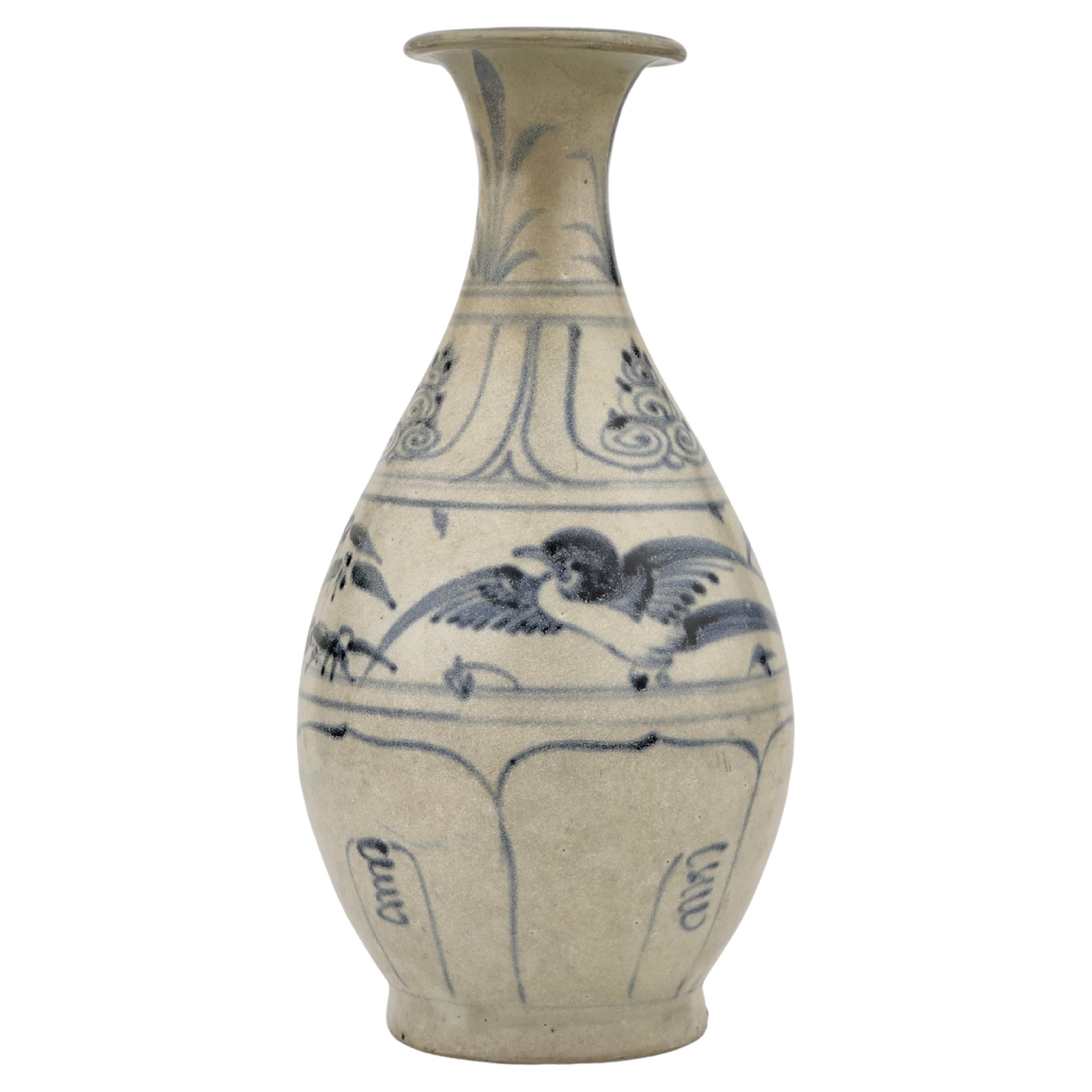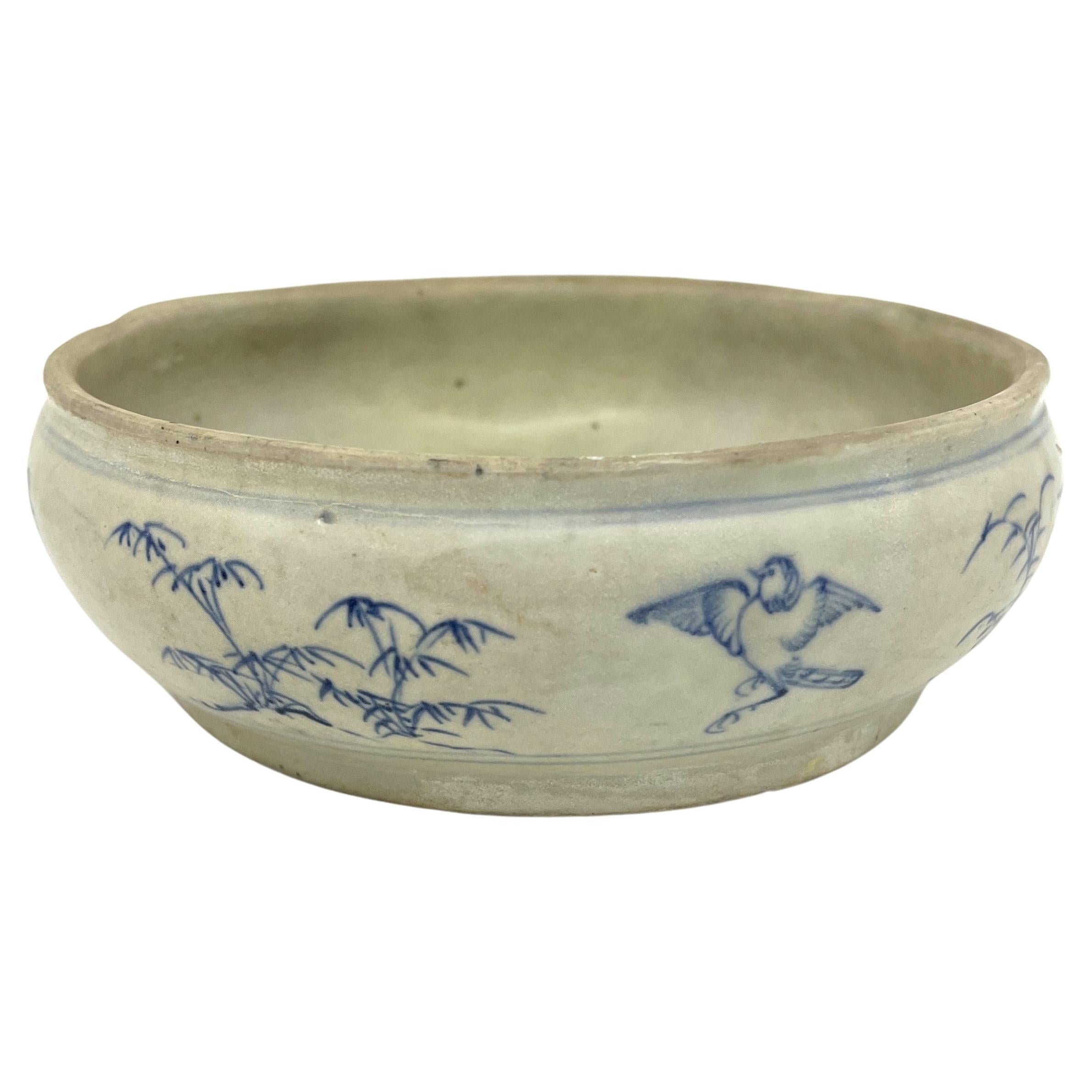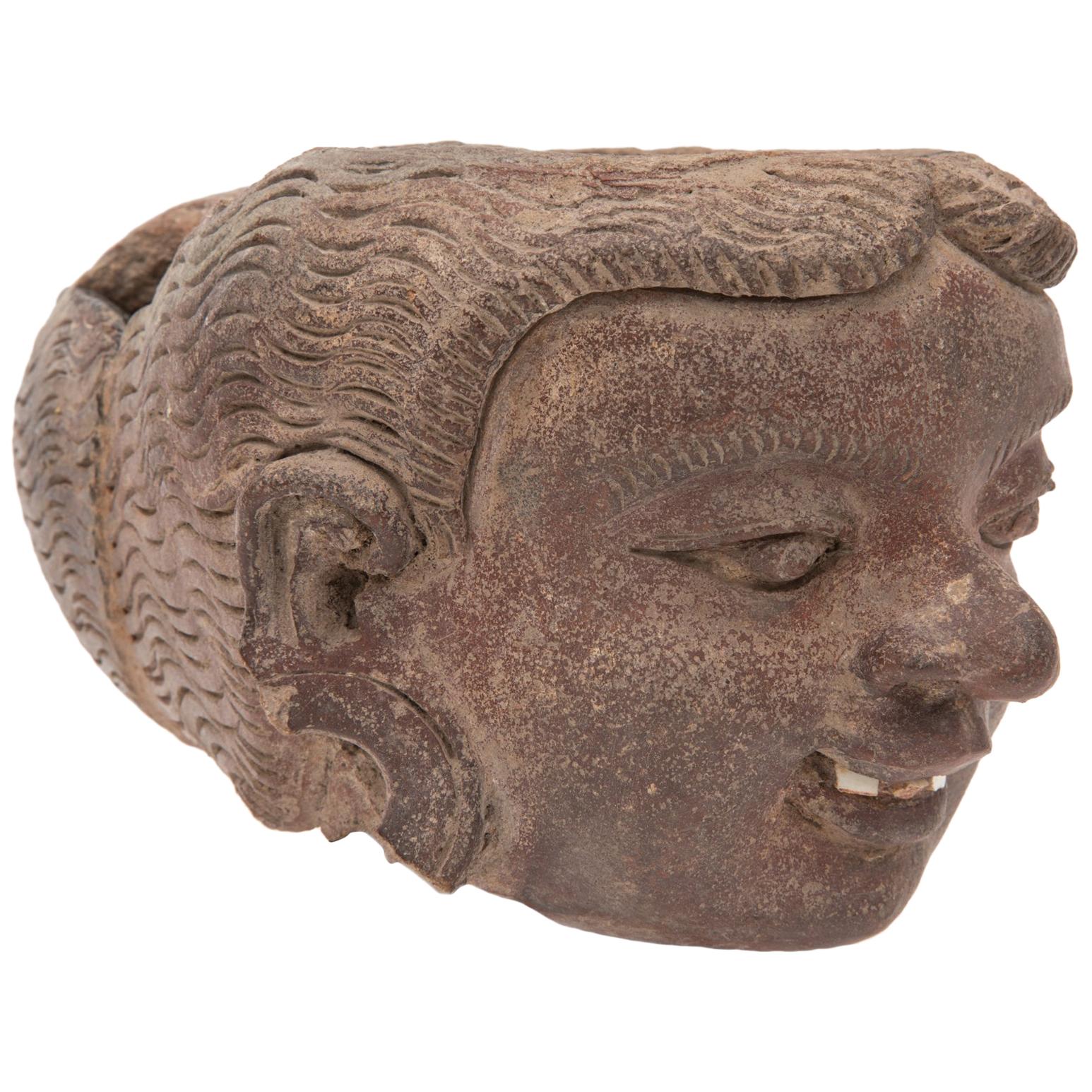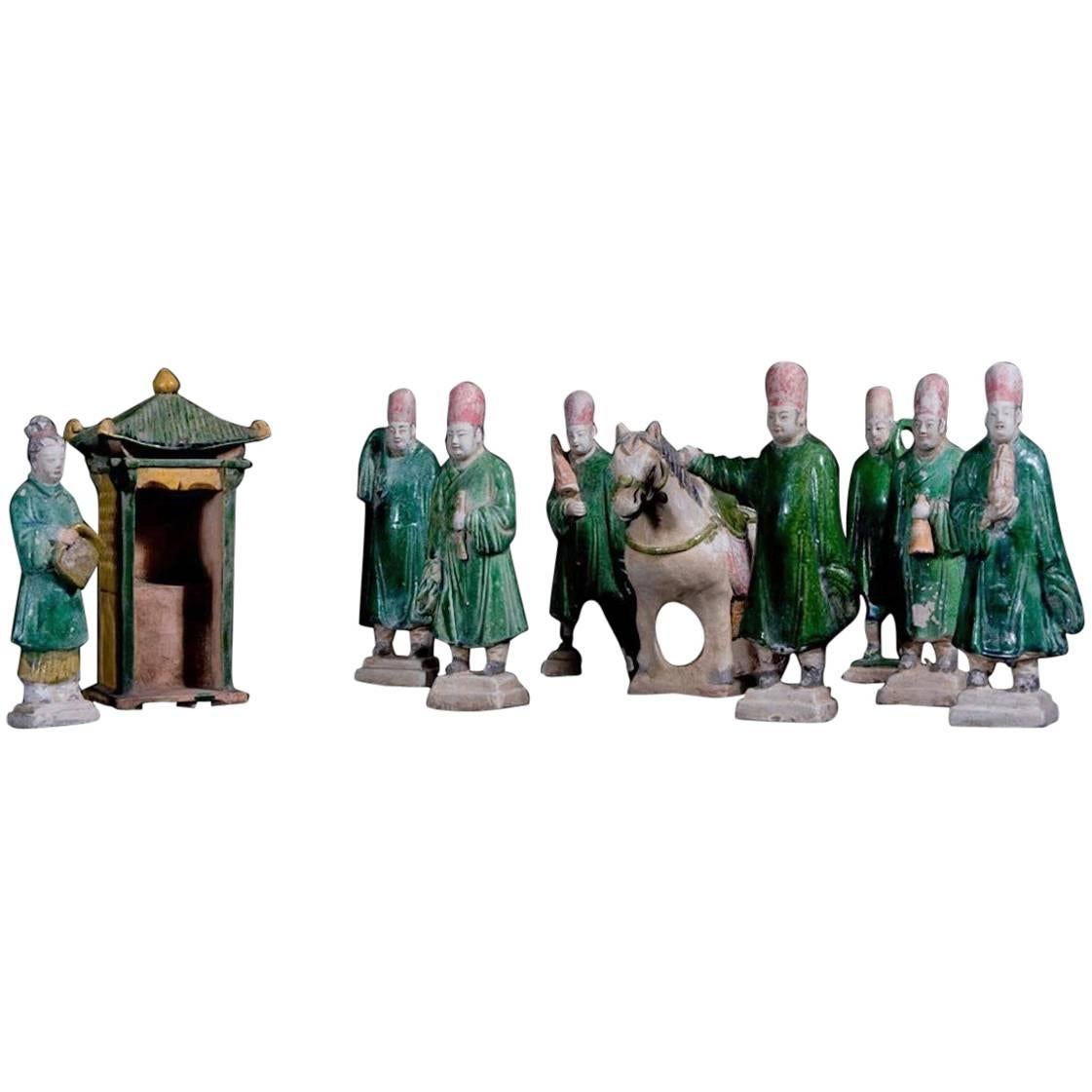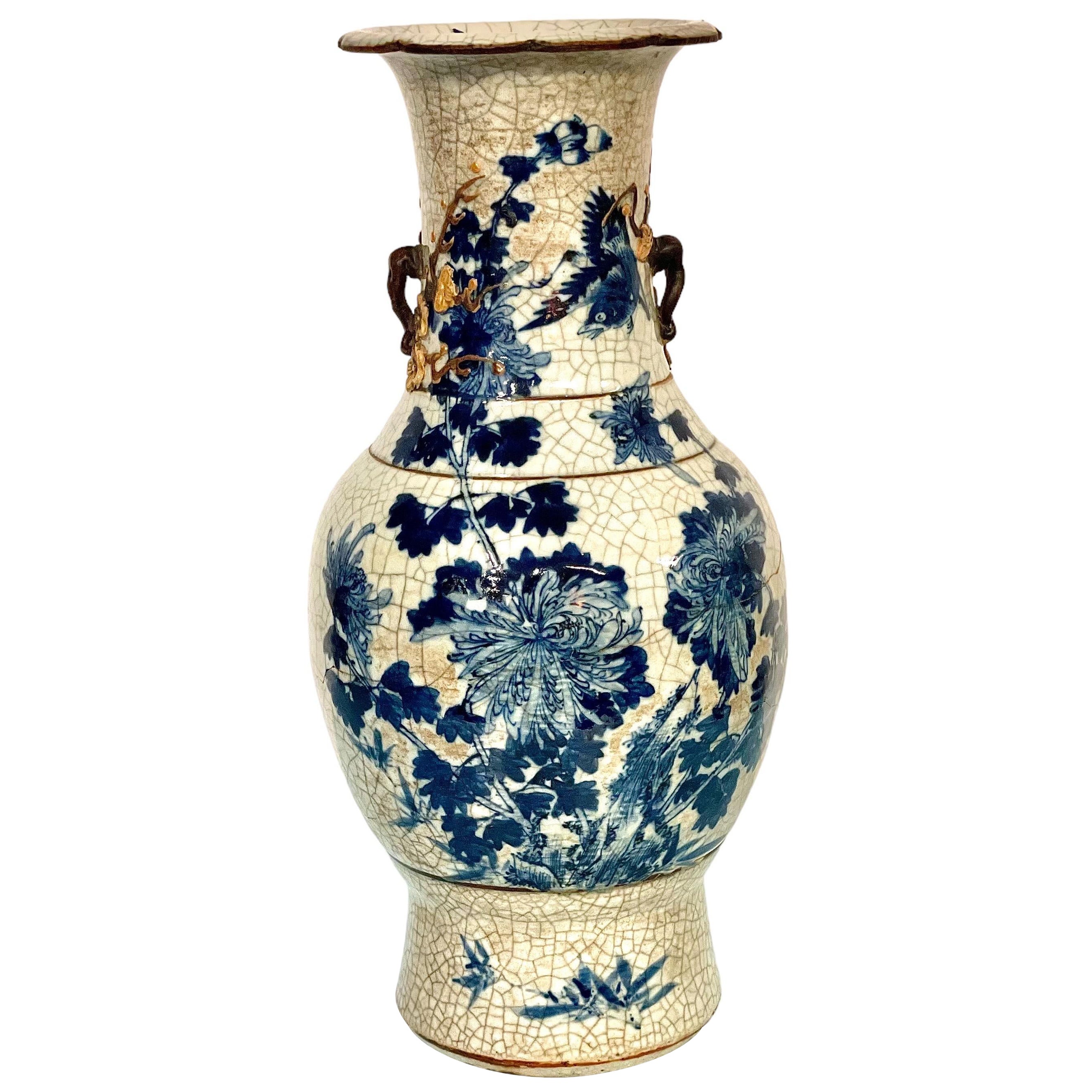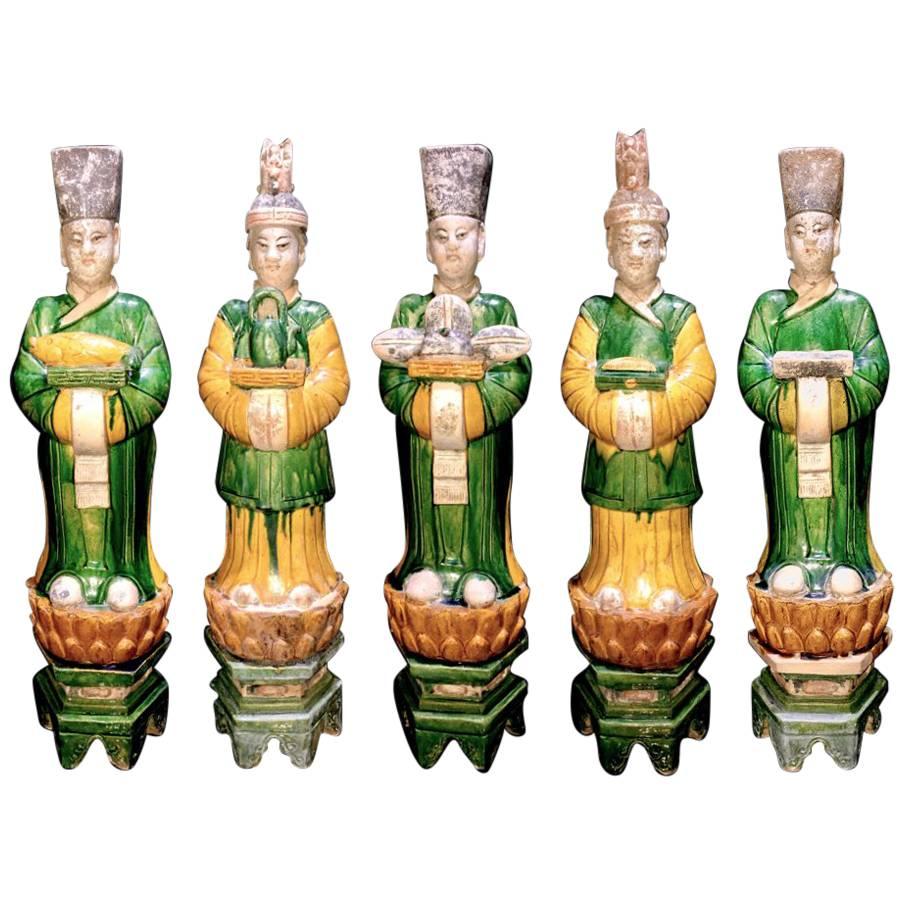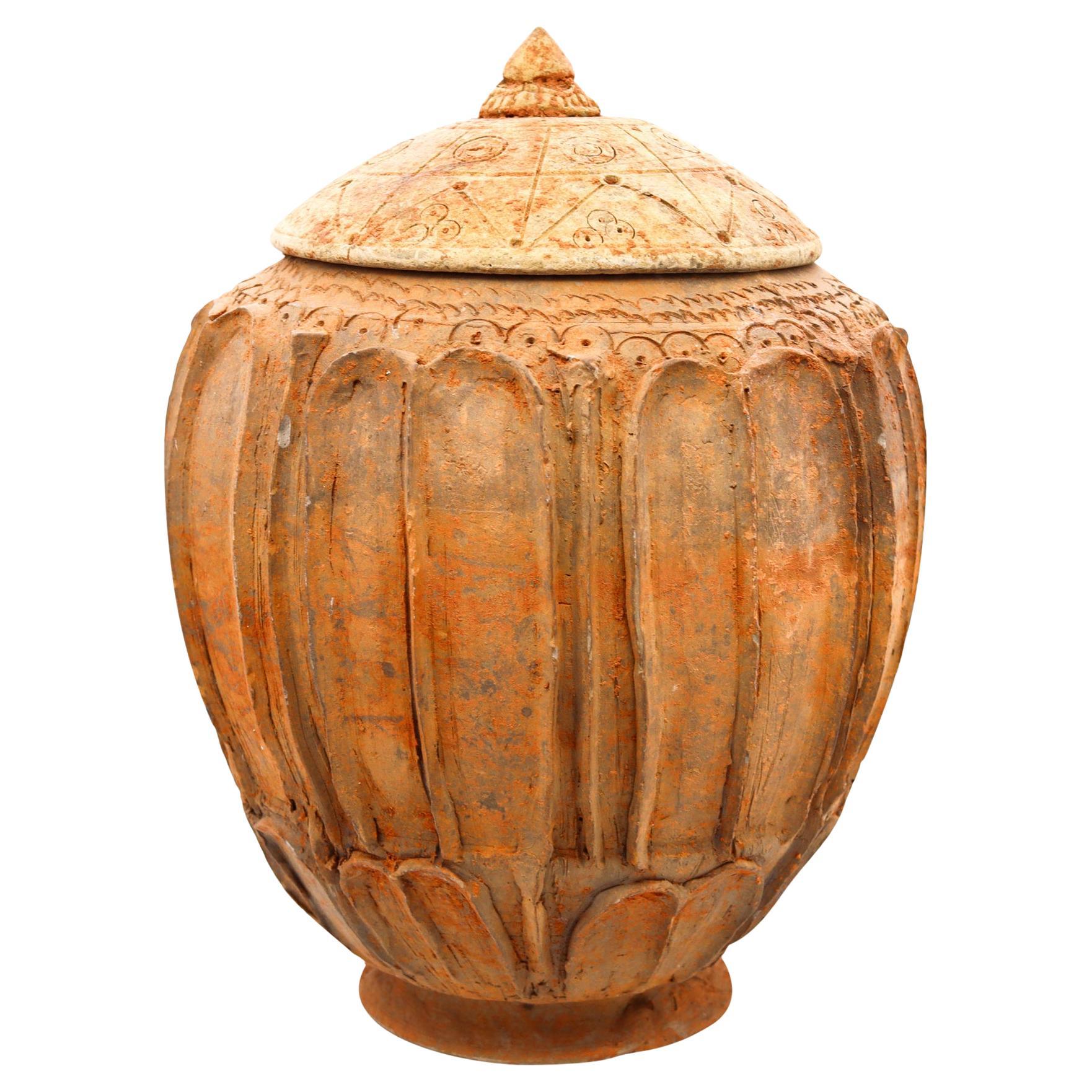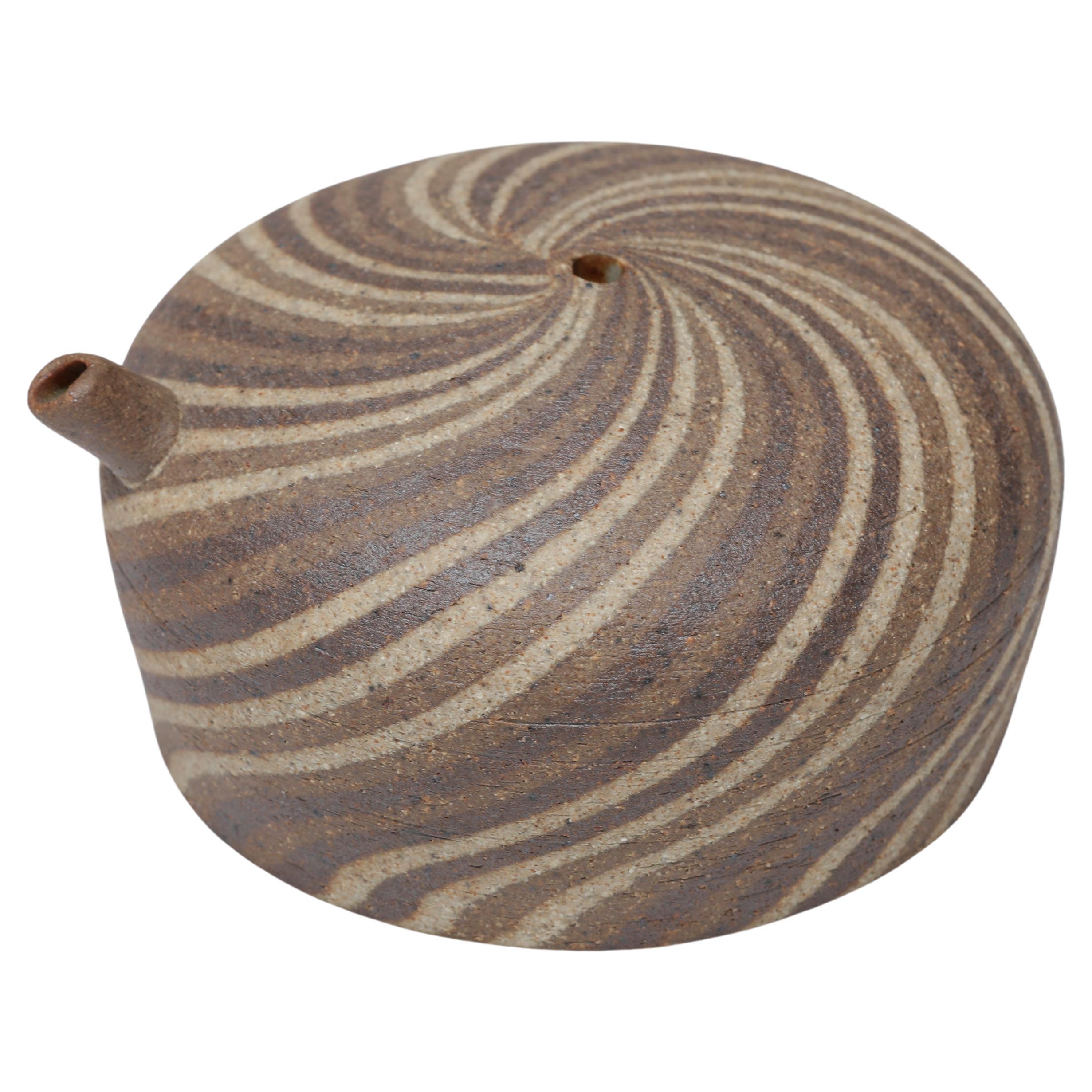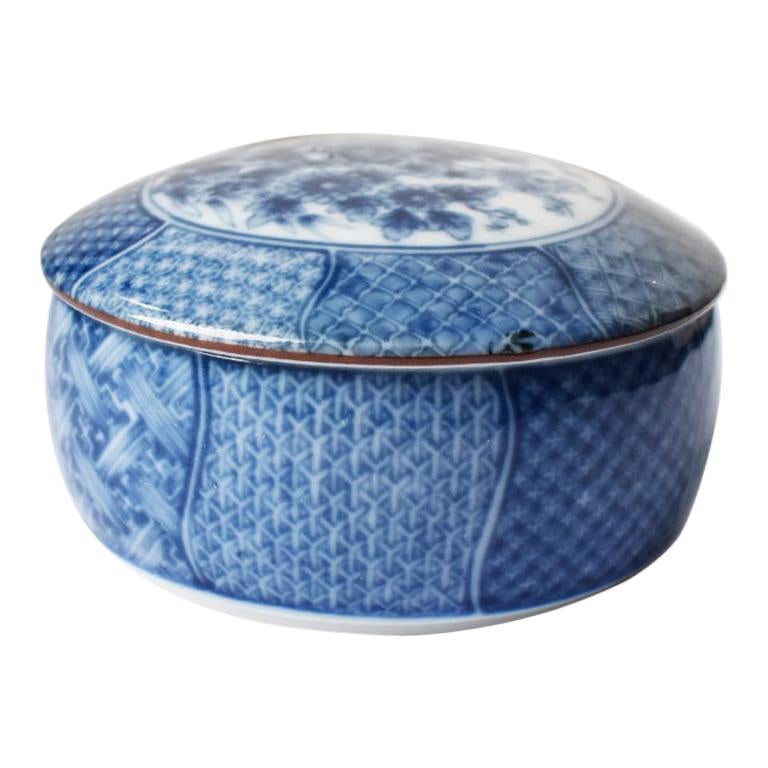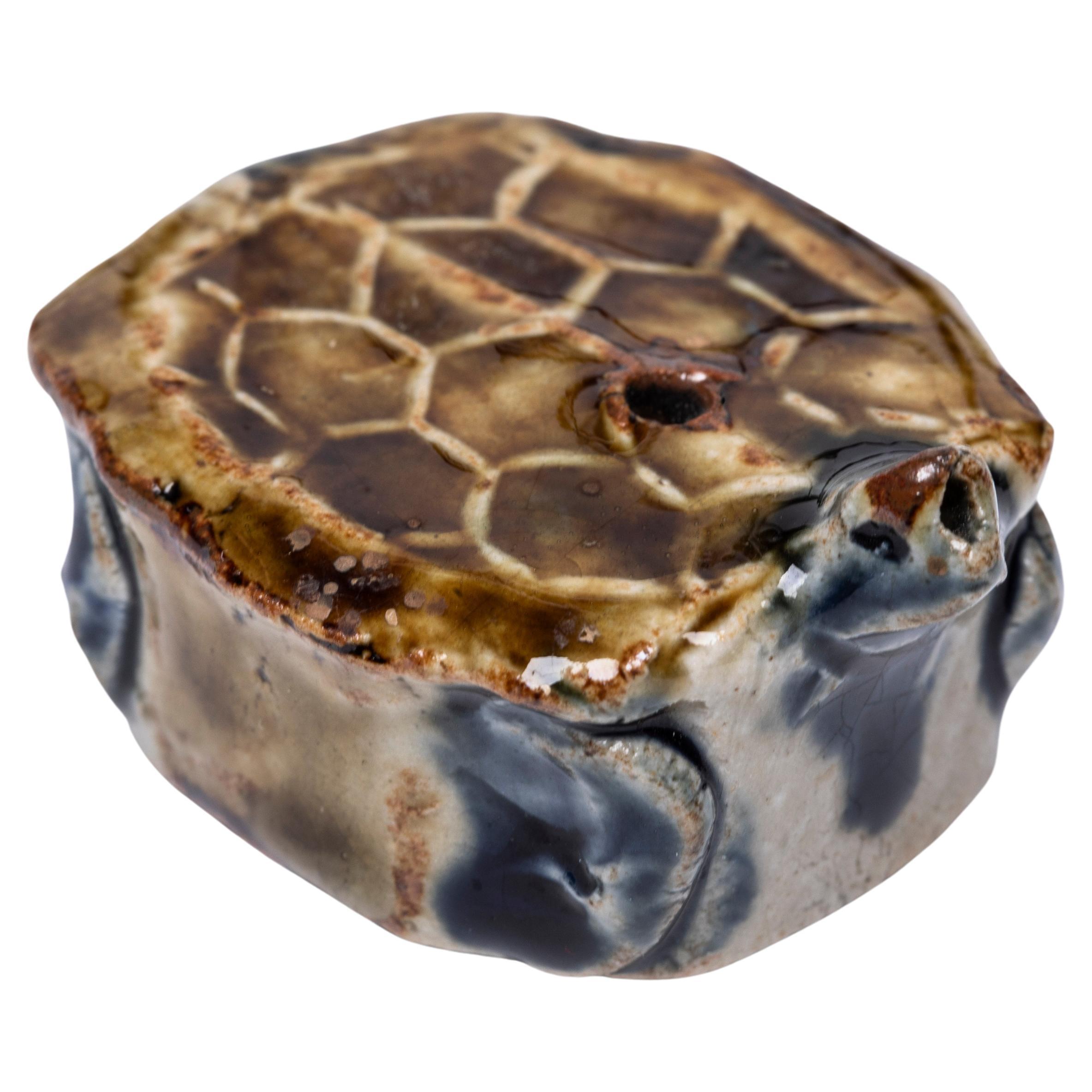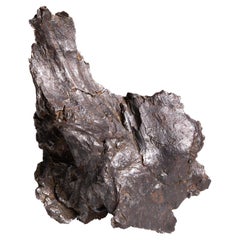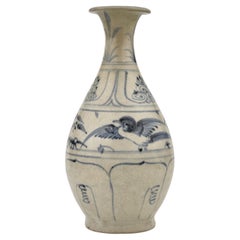
Medieval Shipwreck Hoi An Hoard Blue / White Puffer Fish Water Dropper, 1450 AD
View Similar Items
Want more images or videos?
Request additional images or videos from the seller
1 of 8
Medieval Shipwreck Hoi An Hoard Blue / White Puffer Fish Water Dropper, 1450 AD
About the Item
- Dimensions:Depth: 3 in (7.62 cm)
- Place of Origin:
- Period:
- Date of Manufacture:1450 AD
- Condition:
- Seller Location:London, GB
- Reference Number:1stDibs: LU105221408932
About the Seller
5.0
Recognized Seller
These prestigious sellers are industry leaders and represent the highest echelon for item quality and design.
Established in 2008
1stDibs seller since 2014
100 sales on 1stDibs
Typical response time: 8 hours
Associations
LAPADA - The Association of Arts & Antiques DealersInternational Confederation of Art and Antique Dealers' AssociationsThe British Antique Dealers' Association
More From This SellerView All
- Cross-Section from an Exceptional Lunar MeteoriteLocated in London, GBA piece of the moon - superb lunar meteorite gadamis 004 - Anorthosite 4.5 Billion y/o Among the rarest substances to be found on Earth, thi...Category
Antique 15th Century and Earlier Libyan Natural Specimens
MaterialsStone
- Roman Portrait Bust of a Noble WomanLocated in London, GBRoman miniature bust of a noble woman, carved marble, Severan Dynasty, c. 225 A.D. Rare and particularly elegant ‘wig portrait’ of a noble woman, belonging to the early 3rd Century - a style distinctive of Severan Dynasty female portrait busts, in which part of the head has been chiselled away to allow for the addition of a separate hairpiece, in many cases from a darker material, in order to create an almost painterly effect, in the interplay of different coloured stones. The degree of naturalism and emotional depth achieved in a piece of such a small scale implies a sculptor of great talent. The subtle parting of the lips, in combination with her upturned, vacant gaze and tired eyes, conveys a pensive mood, and even a quiet melancholy. A woman strolls the town in thick wigs bought with gold, Then buys new hair to complement the old. And having bought, she doesn’t blush! Right there she buys, Before Alcides’ and the Muses’ eyes. (Ovid, Ars Amatoria, III, 161-168) The fashion of wig-wearing in this period, as well as its emulation in the wig portrait bust, is widely attributed to Julia Domna...Category
Antique 15th Century and Earlier Italian Classical Roman Busts
MaterialsMarble
- Large Sikhote-Alin Meteorite ShrapnelLocated in London, GBSikhote-Alin Meteorite Shrapnel, Iron, Coarsest Octahedrite “This chunk of twisted metal shows the extreme force of the low altitude air burst which exploded the main mass, causing shockwaves which collapsed chimneys, shattered windows and uprooted trees. Sonic booms were heard more than 300 kilometres away and a 33-kilometre long smoke trail persisted in the sky for several hours.” - Dr Alan E. Rubin, PhD Department of Earth, Planetary, and Space Sciences, UCLA Dating back to the formation of the solar system, some 4.55 billion years ago, Sikhote-Alin meteorites are the best preserved of all known iron meteorites. This extremely aesthetic specimen is a beautiful example of the so-called shrapnel type. It is the result of a powerful secondary explosion which occurred close to the ground, producing a wonderfully scarred and sculptural appearance, with torn and jagged edges and delicate flow lines. On the morning of 12 February 1947, an enormous iron meteor passed through the Earth’s atmosphere, exploding over the Sikhote-Alin mountains in South-eastern Russia...Category
Antique 15th Century and Earlier Russian Natural Specimens
MaterialsIron
- Sculptural Iron Meteorite from Morasko, PolandLocated in London, GBIron Meteorite from Morasko, Poland Circa 4.55 Billion y/o Iron, IAB-MG A sculptural iron meteorite dating to the formation of the solar system, s...Category
Antique 15th Century and Earlier Polish Natural Specimens
MaterialsIron
- Ancient Greek Hellenistic Bronze Statuette of SatyrLocated in London, GBBeautifully cast statuette of a satyr, Greek, Hellenistic Period, 3rd-2nd Century BC, solid cast bronze The present work is a wonderful example of the finest Hellenistic style. The ...Category
Antique 15th Century and Earlier Greek Classical Greek Figurative Sculpt...
MaterialsBronze
- Petrified Wood Slice from ArizonaLocated in London, GBA large section of a petrified conifer tree trunk, (Araucarioxylon arizonicum) from Northern Arizona, dating to the Triassic period, circa 225 million years ago. Over hundreds of m...Category
Antique 15th Century and Earlier American Wall-mounted Sculptures
MaterialsQuartz
You May Also Like
- 15th Century, Hoi an, Vietnamese Blue and White Ceramic Fish Ink HolderLocated in Sampantawong, THHoi An Vietnamese blue and white ink holder in the form of fish. Hoi An Vietnamese ceramic wares made in 14th-15th century. The Hoi An ceramics were excavat...Category
Antique 15th Century and Earlier Vietnamese Antiquities
MaterialsCeramic
$600 Sale Price20% Off - An Annamese stoneware with cobalt blue, Hoi An Hoard, Late 15th centuryLocated in seoul, KRLively birds flit across the body of this pear-shaped vase. The cobalt blue of the underpainting remains dark, even though the clear glaze of the surface has worn away after centuries under the sea. There was remarkable variation in the condition of the ceramic...Category
Antique 15th Century and Earlier Vietnamese Ming Antiquities
MaterialsStoneware
- Annamese stoneware pot, Hoi An Hoard, late 15th century.Located in seoul, KRThis ceramic piece beautifully captures the scene of a sparrow perched on a small branchs, depicted with a minimalist touch. The artist skillfully conveys the sense of intimacy as the sparrow approaches the slender twig. The simplicity of the design is evident in the clean lines and subtle details, allowing the viewer to focus on the essence of the moment. Dates : 15th century Le Dynasty Region : North Annam Type : Stoneware Pot Found/Acquired : Southeast Asia , South China Sea, Hoi An Hoard Reference : Butterfield Treasures Hoi An Hoard Auction Catalogs / San Francisco Butterfields 2000 * Vietnamese trade ceramics Around the mid-14th century, Vietnam developed its ceramics production technology by producing blue and white porcelain, and began to export it overseas. During this period, China Ming Dynasty implemented a policy of lifting the ban from 1371 to 1657 and restricted foreign trade. This served as a good opportunity in the trade history of Vietnamese ceramics, and ceramic exports...Category
Antique 15th Century and Earlier Vietnamese Ming Antiquities
MaterialsStoneware
- Artefact, Majapahit Terracotta Expressive Head, Java, 1300 ADLocated in Antwerp, BEA figurative construction ceramic probably a water collector simply modeled, this head is very expressive and the details can clearly be seen. The Trowulan archaeological site, approximately 100 square kilometres, located in the Mojokerto Regency is believed to contain the remains of what was once the capital city of the Majapahit Empire, featured by 14th century poet Mpu Prapanca in his poem Nagarakretagama. The city was razed during a fight between Girindrawardhana and Kertabhumi in 1478. The Trowulan site is the only archaeological site dating to the Hindu-Buddha classical age to be found in Indonesia. Archaeological remnants and artefacts of the old city in the Trowulan Site were found buried underground as well as on the surface and are still being found today.rtefact:Majapahit terracotta...Category
Antique 15th Century and Earlier Javanese Folk Art Ceramics
MaterialsCeramic
$4,558 Sale Price22% Off - Japanese Octopus Water Dropper, c. 1830sLocated in Brisbane, QLDA Japanese Hirado ware water dropper used in calligraphy dating to the Edo Period (1603-1868). The whimsical, molded design features an array of sea creatures and shells on the base ...Category
Antique Early 19th Century Japanese Edo Ceramics
MaterialsCeramic
- Impressive Terracotta Funerary Procession - Ming Dynasty, China '1368-1644 AD'Located in San Pedro Garza Garcia, Nuevo LeonImpressive Funeral Ensamble of 10 Terracotta Glazed Figures in green and caramel colors depicting a votive procession with a palanquin, his four carriers, a horse, a stableman, two musicians, and an offering carrier. This ensemble is accompanied by a Certificate of Authenticity, and Certificate of Expertise by Jean-Yves Nathan - Specialist in Asian Arts for the CEDEA (The European Confederation of Art Experts). Burial figurines of graceful dancers, mystical beasts, and everyday objects reveal both how people in early China approached death and how they lived. Since people viewed the afterlife as an extension of worldly life, these figurines, called mingqi, sometimes referred as “spirit utensils” or “vessels of ghosts” disclose details of routine existence and provide insights into belief systems over a thousand-year period. The Ming dynasty was the ruling dynasty of China – then known as the Empire of the Great Ming – for 276 years (1368–1644 AD). Founded by Chu Yuan-chang, the rebel leader that was successful in removing the mongols from the throne. Chinese control was re-asserted in China and eastern Asia. Literature became more important, schools were created, and the justice system was reformed. The Ming dynasty is described by some as "one of the greatest eras of orderly government and social stability in human history,” was the last imperial dynasty in China ruled by ethnic Han Chinese. The practice of burying ceramic objects with the deceased went into decline from the 10th to the 14th Century AD. There was a revival in placing miniature representations of glazed terracotta objects such a furniture, food offerings, horses, miniature statues...Category
Antique 15th Century and Earlier Chinese Ming Antiquities
MaterialsTerracotta
Recently Viewed
View AllMore Ways To Browse
Early Ming Blue And White
Antique Vise
Antique Vietnamese
Vietnamese Antique
Antique Vietnamese Furniture
Vietnamese Antique Furniture
Chinese Ceramic Fish
15th Century Chinese Porcelain
Shipwreck China
Medieval Treasure
Ceramic Dragon To Paint
Vietnam Ceramic
White Puffer
Shipwreck Ceramics
South Vietnam
Vietnamese Antique Asian Antiques
Medieval Dragon
Vietnamese Blue And White

